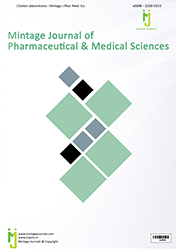Abstract
ANAEMIA DURING PREGNANCY
Author(s): Jindal Sanam
Nutritional anaemia due to iron and folate deficiency is a major global Public Health problem. South Asia ranks among the reg
ions, which have the highest prevalence of
anaemia in the world and India perhaps has the
highest prevalence of anaemia among the South Asian countries. Prevalence of anaemia is higher among pregnant women
and preschool children. Even among higher income educated segments of population about 50% of children, adolescent girls and
pregnant women
are anaemic. Inadequate
dietary iron, folate intake and poor bioavailability of dietary iron from the fibre, phytate rich Indian diets are the major
factors responsible for high prevalence of anaemia.
Increased requirement of iron during growth and pregnan
cy and chronic blood loss contribute to higher prevalence in specific groups. Many times anaemia is directly or
indirectly responsible for maternal deaths. Early detection and effective management of anaemia in pregnancy can contribute s
ubstantially to red
uction in maternal mortality.
Maternal anaemia is associated with poor intrauterine growth and increased risk of preterm births and low birth weight rates.
This in turn results in higher perinatal morbidity
and mortality, and higher infant mortality rate.
Maternal anaemia contributes to intergenerational cycle of poor growth in the offspring. Early detection and effective
management of anaemia in preganancy can lead to substantial reduction in under nutrition in childhood, adolescence and improv
ement in adu
lt height.

ISSN: 2320-3315
ICV :81.58

